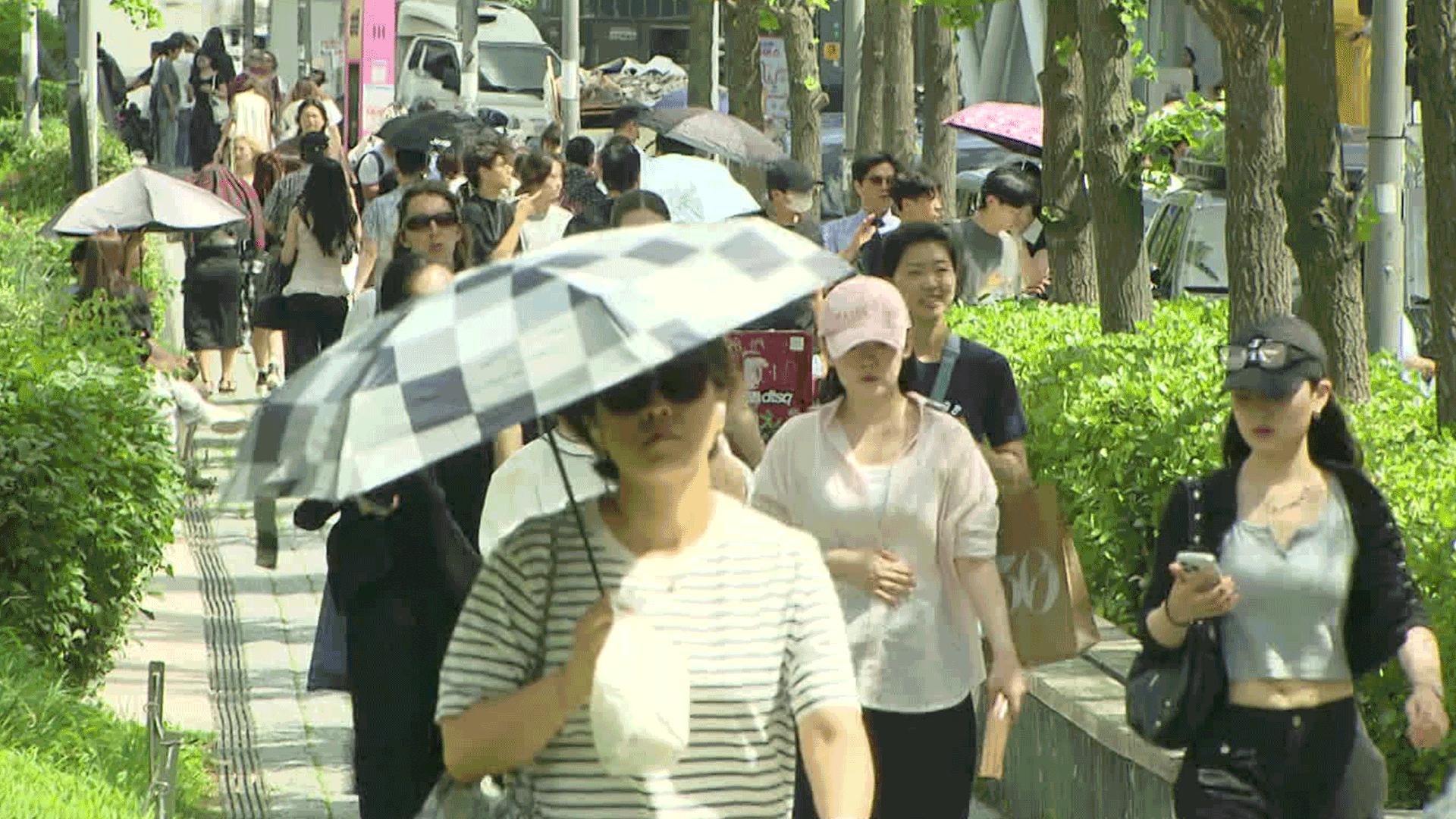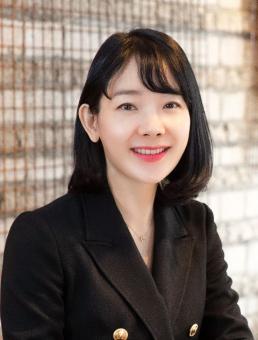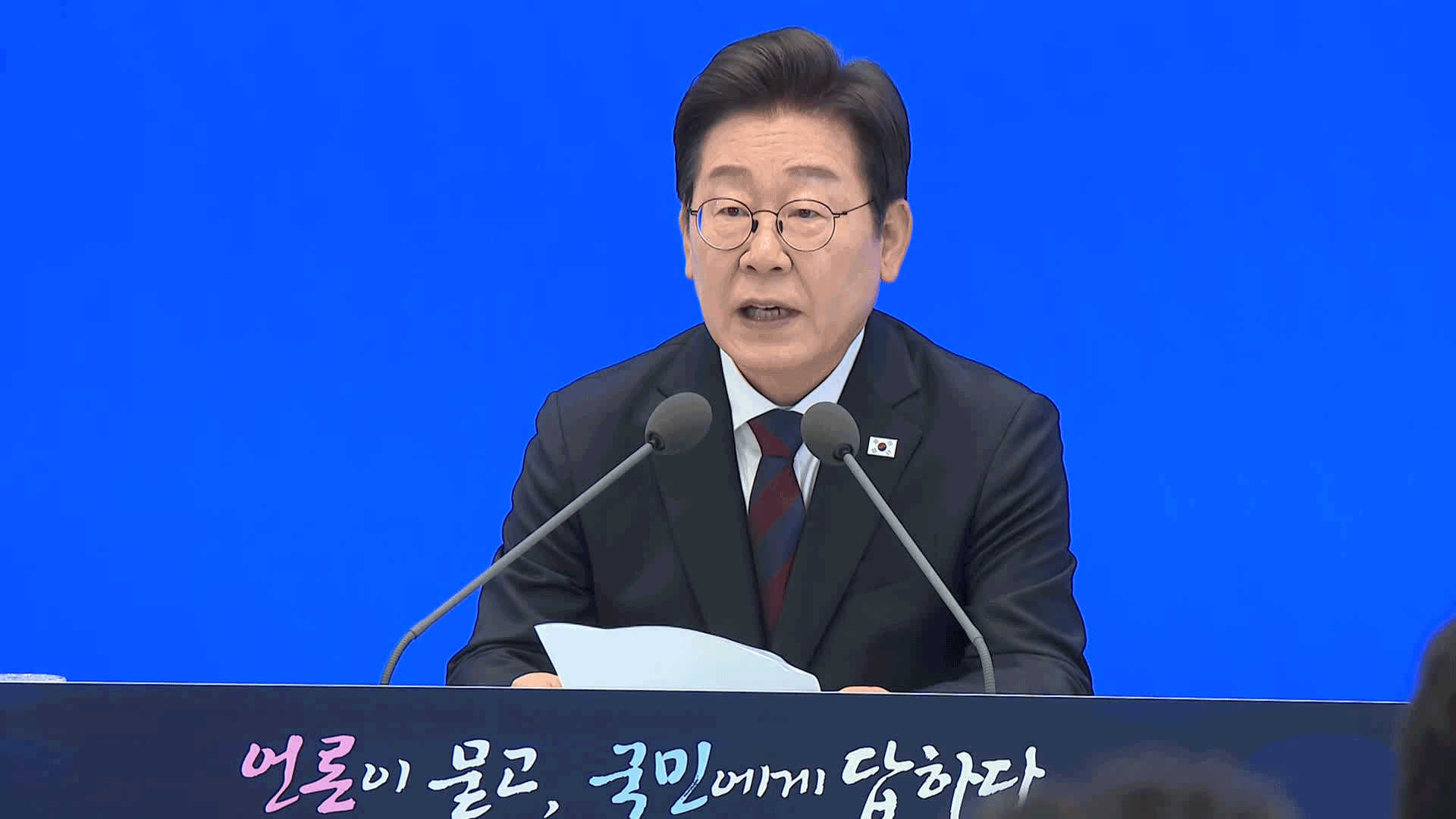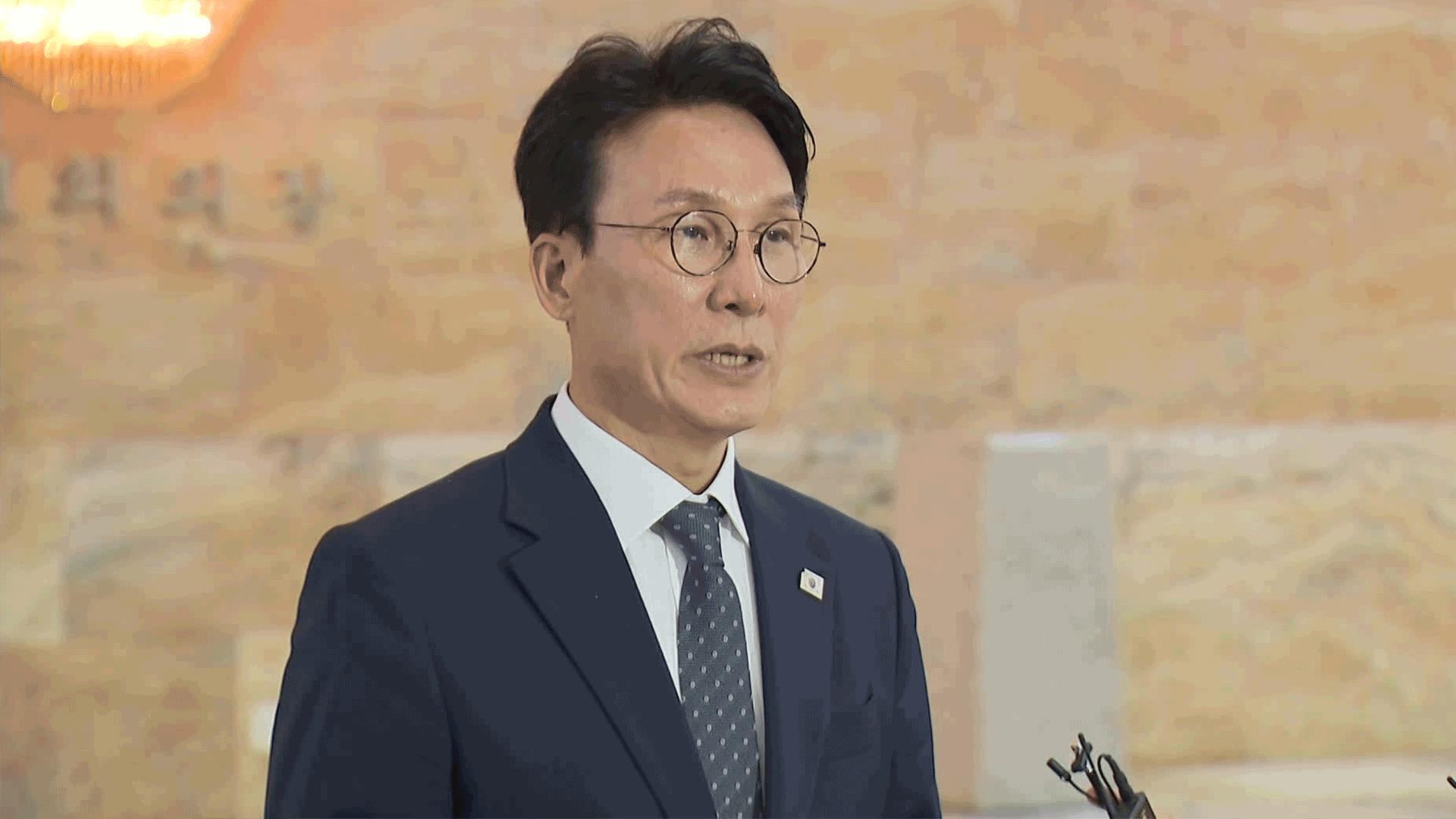[Anchor]
Despite it being the monsoon season, the extreme heat continues to intensify.
An analysis of Korea’s past weather data shows that heatwaves and tropical nights are not only arriving earlier each year, but also occurring more frequently.
Here’s our weather correspondent Shin Bang-sil with the report.
[Report]
This year’s first heatwave hit on May 20, with regions like Daegu in the Yeongnam area recording a heat index above the heatwave threshold of 33°C.
The first tropical night was observed on June 19 in Gangneung.
Over the past 50 years, heatwaves and tropical nights mainly occurred during peak summer—July and August. Now, they are arriving much earlier.
This trend has continued since the 2010s.
[Min Seung-gi / Professor, Department of Environmental Engineering, POSTECH: “We often say summer is expanding. As summer stretches out at both ends, heatwaves are also arriving earlier.”
The number of heatwave and tropical night days is also sharply increasing.
In the 1970s, there was an average of 8.3 heatwave days per year. In the 2020s, that number has more than doubled to 16.7 days.
Tropical nights have increased even more dramatically—from an average of 4.2 days in the 1970s to three times that in recent years.
The phenomenon known as “super tropical nights”—when the nighttime low temperature does not fall below 30°C—is also becoming more common.
The first recorded super tropical night in Korea occurred in August 2013 in Gangneung. Another occurred just last night this year.
These occurrences are expanding inland to cities like Seoul.
[Lee Myung-in / Director, Heatwave Research Center, UNIST: “Inland cities are more vulnerable to tropical nights due to the urban heat island effect caused by artificial heat sources.”]
With extreme heat typically peaking after the monsoon ends, this year’s heatwaves and tropical nights are also expected to remain on an upward trend.
This is Shin Bang-sil, KBS News.
Despite it being the monsoon season, the extreme heat continues to intensify.
An analysis of Korea’s past weather data shows that heatwaves and tropical nights are not only arriving earlier each year, but also occurring more frequently.
Here’s our weather correspondent Shin Bang-sil with the report.
[Report]
This year’s first heatwave hit on May 20, with regions like Daegu in the Yeongnam area recording a heat index above the heatwave threshold of 33°C.
The first tropical night was observed on June 19 in Gangneung.
Over the past 50 years, heatwaves and tropical nights mainly occurred during peak summer—July and August. Now, they are arriving much earlier.
This trend has continued since the 2010s.
[Min Seung-gi / Professor, Department of Environmental Engineering, POSTECH: “We often say summer is expanding. As summer stretches out at both ends, heatwaves are also arriving earlier.”
The number of heatwave and tropical night days is also sharply increasing.
In the 1970s, there was an average of 8.3 heatwave days per year. In the 2020s, that number has more than doubled to 16.7 days.
Tropical nights have increased even more dramatically—from an average of 4.2 days in the 1970s to three times that in recent years.
The phenomenon known as “super tropical nights”—when the nighttime low temperature does not fall below 30°C—is also becoming more common.
The first recorded super tropical night in Korea occurred in August 2013 in Gangneung. Another occurred just last night this year.
These occurrences are expanding inland to cities like Seoul.
[Lee Myung-in / Director, Heatwave Research Center, UNIST: “Inland cities are more vulnerable to tropical nights due to the urban heat island effect caused by artificial heat sources.”]
With extreme heat typically peaking after the monsoon ends, this year’s heatwaves and tropical nights are also expected to remain on an upward trend.
This is Shin Bang-sil, KBS News.
■ 제보하기
▷ 카카오톡 : 'KBS제보' 검색, 채널 추가
▷ 전화 : 02-781-1234, 4444
▷ 이메일 : kbs1234@kbs.co.kr
▷ 유튜브, 네이버, 카카오에서도 KBS뉴스를 구독해주세요!
- Heat waves, tropical nights rise
-
- 입력 2025-07-02 23:52:09

[Anchor]
Despite it being the monsoon season, the extreme heat continues to intensify.
An analysis of Korea’s past weather data shows that heatwaves and tropical nights are not only arriving earlier each year, but also occurring more frequently.
Here’s our weather correspondent Shin Bang-sil with the report.
[Report]
This year’s first heatwave hit on May 20, with regions like Daegu in the Yeongnam area recording a heat index above the heatwave threshold of 33°C.
The first tropical night was observed on June 19 in Gangneung.
Over the past 50 years, heatwaves and tropical nights mainly occurred during peak summer—July and August. Now, they are arriving much earlier.
This trend has continued since the 2010s.
[Min Seung-gi / Professor, Department of Environmental Engineering, POSTECH: “We often say summer is expanding. As summer stretches out at both ends, heatwaves are also arriving earlier.”
The number of heatwave and tropical night days is also sharply increasing.
In the 1970s, there was an average of 8.3 heatwave days per year. In the 2020s, that number has more than doubled to 16.7 days.
Tropical nights have increased even more dramatically—from an average of 4.2 days in the 1970s to three times that in recent years.
The phenomenon known as “super tropical nights”—when the nighttime low temperature does not fall below 30°C—is also becoming more common.
The first recorded super tropical night in Korea occurred in August 2013 in Gangneung. Another occurred just last night this year.
These occurrences are expanding inland to cities like Seoul.
[Lee Myung-in / Director, Heatwave Research Center, UNIST: “Inland cities are more vulnerable to tropical nights due to the urban heat island effect caused by artificial heat sources.”]
With extreme heat typically peaking after the monsoon ends, this year’s heatwaves and tropical nights are also expected to remain on an upward trend.
This is Shin Bang-sil, KBS News.
Despite it being the monsoon season, the extreme heat continues to intensify.
An analysis of Korea’s past weather data shows that heatwaves and tropical nights are not only arriving earlier each year, but also occurring more frequently.
Here’s our weather correspondent Shin Bang-sil with the report.
[Report]
This year’s first heatwave hit on May 20, with regions like Daegu in the Yeongnam area recording a heat index above the heatwave threshold of 33°C.
The first tropical night was observed on June 19 in Gangneung.
Over the past 50 years, heatwaves and tropical nights mainly occurred during peak summer—July and August. Now, they are arriving much earlier.
This trend has continued since the 2010s.
[Min Seung-gi / Professor, Department of Environmental Engineering, POSTECH: “We often say summer is expanding. As summer stretches out at both ends, heatwaves are also arriving earlier.”
The number of heatwave and tropical night days is also sharply increasing.
In the 1970s, there was an average of 8.3 heatwave days per year. In the 2020s, that number has more than doubled to 16.7 days.
Tropical nights have increased even more dramatically—from an average of 4.2 days in the 1970s to three times that in recent years.
The phenomenon known as “super tropical nights”—when the nighttime low temperature does not fall below 30°C—is also becoming more common.
The first recorded super tropical night in Korea occurred in August 2013 in Gangneung. Another occurred just last night this year.
These occurrences are expanding inland to cities like Seoul.
[Lee Myung-in / Director, Heatwave Research Center, UNIST: “Inland cities are more vulnerable to tropical nights due to the urban heat island effect caused by artificial heat sources.”]
With extreme heat typically peaking after the monsoon ends, this year’s heatwaves and tropical nights are also expected to remain on an upward trend.
This is Shin Bang-sil, KBS News.
-
-

신방실 기자 weezer@kbs.co.kr
신방실 기자의 기사 모음
-
이 기사가 좋으셨다면
-
좋아요
0
-
응원해요
0
-
후속 원해요
0











![[단독] 도이치 주포 “김건희, 내 덕에 떼돈 벌어…22억 원 주문”](/data/news/2025/07/03/20250703_KpuU43.png)
![[단독] “쪽지 얼핏 봤다, 안 받았다”더니…CCTV에선 문건 챙긴 이상민](/data/news/2025/07/03/20250703_Lv3LjI.png)


이 기사에 대한 의견을 남겨주세요.